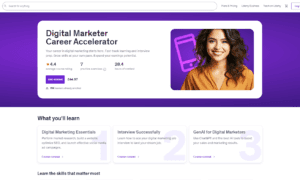In today’s digital age, content marketing has emerged as a powerful tool for businesses, including those in the vibrant state of Missouri. Content marketing services have become an integral part of the marketing strategy for many companies, helping them connect with their target audience, establish authority in their respective industries, and ultimately drive revenue. However, measuring the return on investment (ROI) in content marketing can be a challenging endeavor. In this article, we will explore the importance of measuring ROI in content marketing services for Missouri companies and provide insights into effective strategies to do so.
Introduction
The Significance of Content Marketing in Missouri
Missouri is home to a diverse business landscape, ranging from small startups to large corporations across various industries, including manufacturing, agriculture, healthcare, and technology. In this competitive environment, content marketing has emerged as a game-changer for companies seeking to differentiate themselves and engage with their local and global audiences effectively.
Building Brand Awareness: Content marketing allows Missouri businesses to build brand awareness and establish themselves as industry leaders. By creating valuable and relevant content, companies can engage with their target audience, increasing brand recognition and trust.
Driving Website Traffic: High-quality content can drive organic traffic to a company’s website. This is essential for businesses in Missouri looking to expand their online presence and attract potential customers.
Nurturing Leads: Content marketing can be a powerful tool for lead generation and nurturing. Missouri companies can use informative blog posts, eBooks, and other content types to capture leads and guide them through the sales funnel.
Showcasing Local Expertise: Many Missouri businesses rely on their local expertise to gain a competitive edge. Content marketing allows them to showcase their knowledge of the Missouri market and connect with local customers effectively.
Challenges in Measuring Content Marketing ROI
While content marketing offers numerous benefits, quantifying its impact on the bottom line can be challenging. Unlike traditional advertising methods, where ROI is often more straightforward to measure, content marketing’s results may take time to manifest. Here are some common challenges Missouri companies face when measuring content marketing ROI:
Time Lag: Content marketing typically involves a longer sales cycle. It can take months or even years before the full impact of content efforts is realized, making it challenging to attribute revenue directly to specific content pieces.
Diverse Metrics: Content marketing ROI encompasses a wide range of metrics, from website traffic and social media engagement to lead generation and conversion rates. Navigating these diverse metrics can be overwhelming for businesses.
Multi-Touch Attribution: In many cases, a customer’s journey involves multiple touchpoints with a brand’s content before making a purchase decision. Determining which content piece contributed most to the conversion can be complex.
Quality vs. Quantity: Focusing solely on the quantity of content produced can lead to a disconnect between content efforts and actual ROI. Quality and relevance are paramount in content marketing.
Effective Strategies for Measuring Content Marketing ROI
Despite the challenges, it is essential for Missouri companies to measure the ROI of their content marketing efforts to ensure that their resources are being allocated effectively. Here are some effective strategies for measuring content marketing ROI:
Set Clear Objectives:
Before launching a content marketing campaign, establish clear and measurable objectives. Are you looking to increase website traffic, generate leads, or boost sales? Defining your goals will make it easier to track progress.
Use Analytics Tools:
Invest in analytics tools such as Google Analytics, HubSpot, or Adobe Analytics to track key performance indicators (KPIs) related to your content marketing efforts. These tools can provide valuable insights into website traffic, conversion rates, and user behavior.
Implement UTM Parameters:
Use UTM parameters to track the source of your website traffic accurately. This allows you to attribute specific leads and conversions to individual pieces of content or marketing campaigns.
Calculate Customer Lifetime Value (CLV):
To measure long-term ROI, calculate the CLV of customers acquired through content marketing efforts. This metric helps you understand the long-term value of your content strategy.
Conduct A/B Testing:
A/B testing involves creating variations of your content and measuring their performance. This can help you identify which types of content resonate best with your audience and lead to higher conversions.
Monitor Conversion Paths:
Analyze the customer journey to identify the content pieces that contribute most to conversions. This can be done through multi-touch attribution models that assign value to each touchpoint.
Track Content Engagement:
Monitor user engagement with your content, such as time spent on pages, bounce rates, and social media shares. Engaging content is more likely to convert.
Calculate Cost per Acquisition (CPA):
To determine ROI accurately, calculate the cost per acquisition for each customer acquired through content marketing efforts. Compare this with the customer’s lifetime value to assess profitability.
Conduct Surveys and Feedback:
Collect feedback from your audience to understand how your content influenced their purchase decisions. This qualitative data can complement quantitative metrics.
Evaluate Social Proof:
Social proof, such as customer reviews and testimonials, can be a valuable indicator of content marketing success. Monitor how social proof affects customer trust and conversions.
Conclusion
Content marketing has become an essential component of the marketing strategy for Missouri companies aiming to thrive in today’s digital landscape. While measuring ROI in content marketing can be challenging, it is vital for businesses to assess the effectiveness of their efforts and allocate resources wisely. By setting clear objectives, using analytics tools, and implementing effective measurement strategies, Missouri companies can gain valuable insights into the impact of their content marketing services. Ultimately, understanding and optimizing content marketing ROI can lead to increased brand awareness, website traffic, and revenue, helping businesses in the Show-Me State thrive in the modern business world.



































